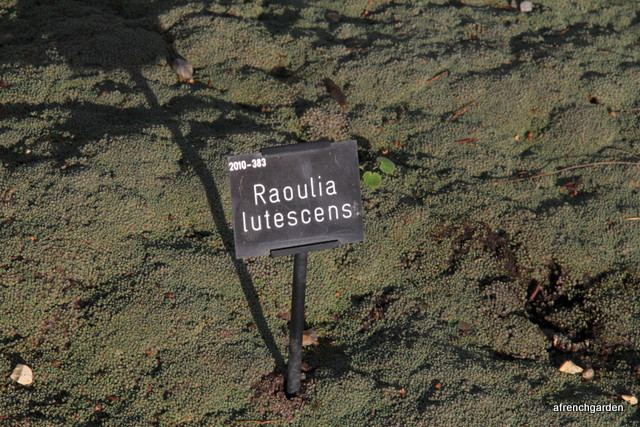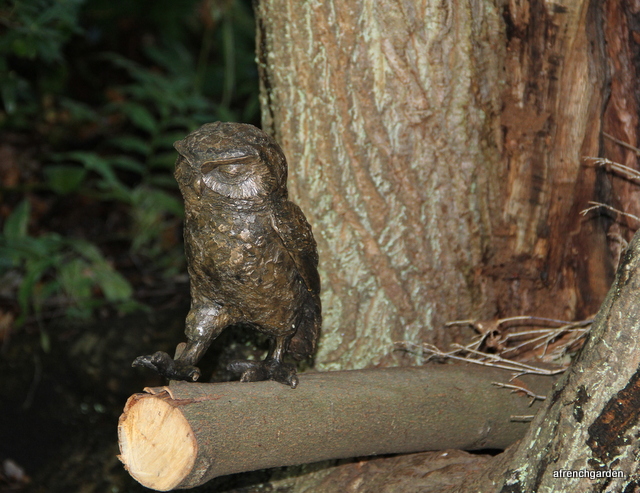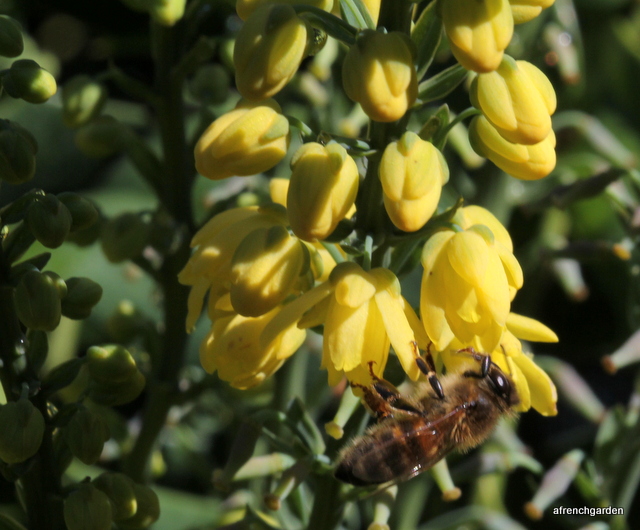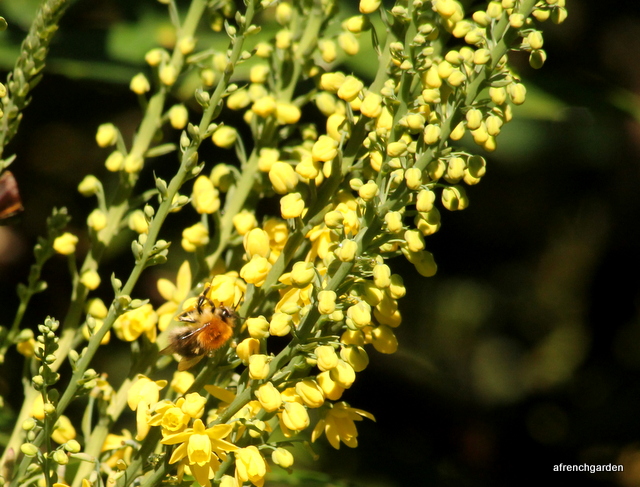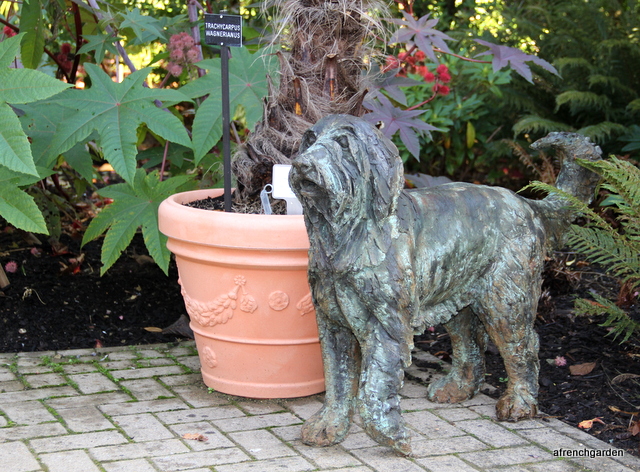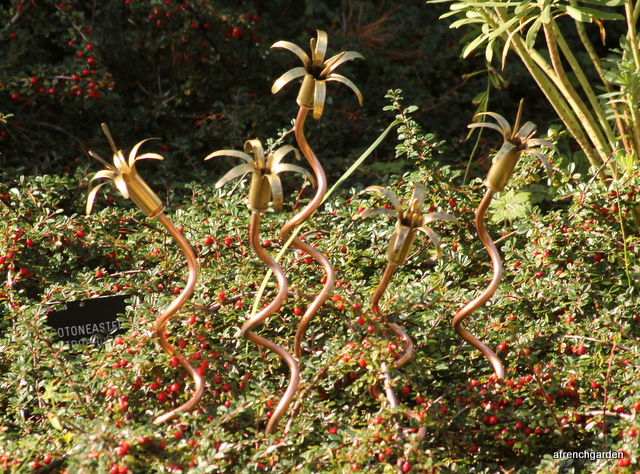I first visited The Savill Garden in December 2012 (Free in December). I admit the absence of an entrance fee attracted me to visit but it has become one of my favourite gardens. For me to really appreciate a garden I need to get to know it and I look forward to seeing some of my favourite trees as I would old friends.
There is plenty to see even in the winter and I was interested to see the differences this exceptionally mild winter might show.
I was impressed that by covering the Gunnera plants with their leaves in such regular pyramids that it transformed the bed into an attractive feature for the winter.
The arch leading into the spring garden was already sprinkled with flowering pink Camellias, judging by the label Camellia Japponica “Lady Clare”.
Rhododendron kiusianum or Kyushu Azalea, a native of southern Japan, was also in flower.
Heading to the Temperate House I was disappointed that the large Mahonia “Charity” was no longer in flower, I think the mild autumn encouraged it to flower earlier than usual. However, I noticed the beginnings of a green roof which I will be interested to watch progress in future visits.
The Acacia pravissima was flowering brightly against the wall. This plant is a native of Australia and would usually flower a month after Acacia dealbata in France. Acacia dealbata is also a native of Australia but is very commonly grown in parts of France including our region and flowers from January onwards. I have not planted any Mimosa in our garden, despite the attractive perfume of the flowers, as it is very vigorous and invasive and will push up shoots around the main trunk.
Nearby, we could not help but be amused at this little plant which is so well-named – Chamaecyparis obtusa “Leprechaun”. It has an expected height of thirty centimetres.
At the same raised bed I was attracted to what I took for an algal mat. Wikipedia tells us that it is in the “pussy’s-toes-tribe” and is a native New Zealand plant which when covered by its little white flowers can resemble flocks of sheep when viewed from afar – leading to its common name of Vegetable Sheep!
Coming back to more mundane plants, this was a time to see the wonderful varieties of Witchhazel that grow throughout the gardens, like this Hamamelia japponica Pallida.
Or the very similar Hamamelia intermedia Pallida.
I liked the Hamamelis Intermedia “Orange Peel” as the petals were a deep, bright yellow and did look like orange peel.
I was disappointed not to see the huge Mahonia “Charity” in flower but it did bring my attention to other Mahonias that can be grown like this Mahonia Bokrafoot. This is a very compact hybrid of M. repens and will only reach 60cm in height.
A patch had been planted out with several Mahonia wagneri ‘Aldenhamensis’ which were flowering bravely, despite being still in the seedling stage. It will probably take about ten years for these plants to reach a maximum height of one and half metres and it is comforting for me to be aware that even in these beautiful mature gardens there is a lot of renewal and beginnings amongst the stunning focal points.
One thing we could not ignore was the noisy groups of green parrots calling from high in the trees. These are the rose-ringed parakeets (Psittacula krameri), also known as the ring-necked parakeet. These birds have most likely escaped from captivity having been imported from Africa or Asia as pets. Large flocks of parakeets have established themselves in the Greater London area and are not always welcome as they can be very noisy additions to the neighbourhood.
There was so much to see like these Iris reticulata “Katherine Hodgkin”.
And I still managed to see some bumble bees in the Hellebores
and Arbutus arachnoides.








